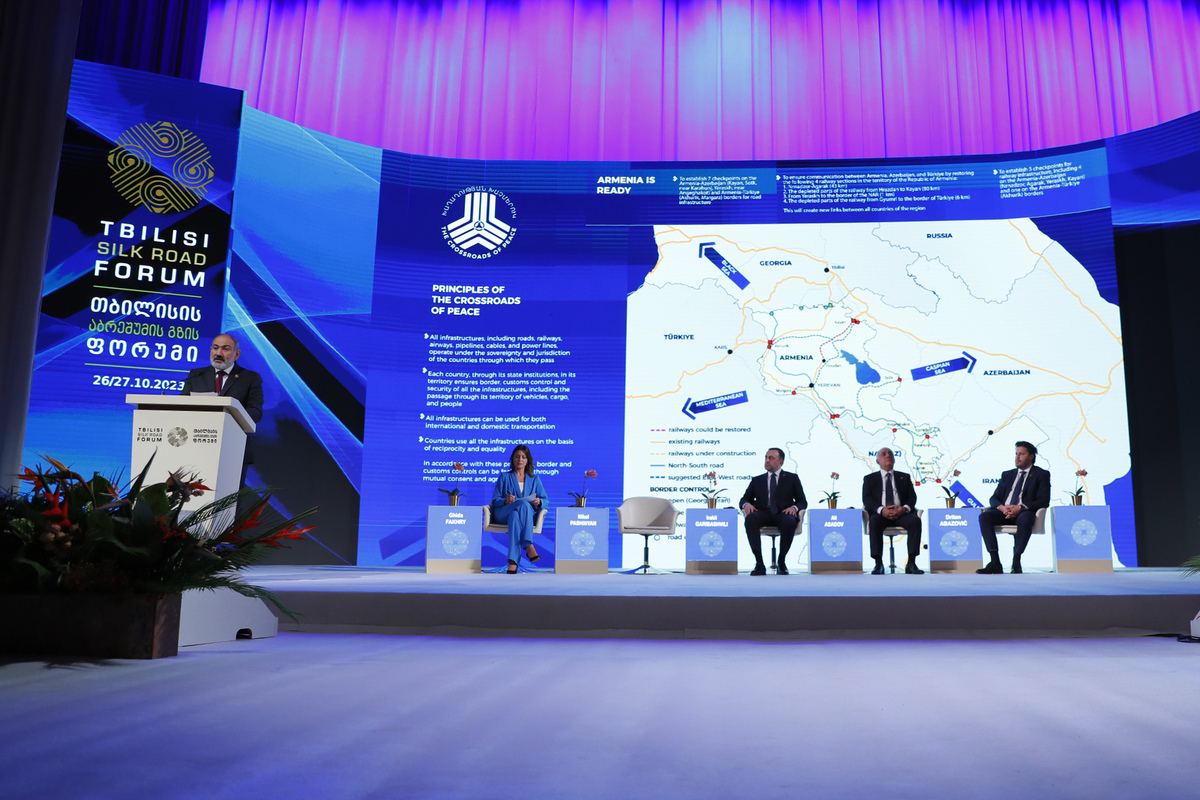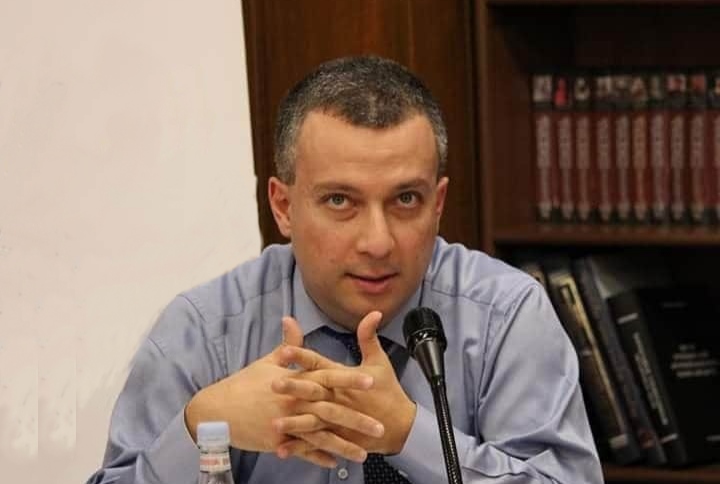
As Armenia and Azerbaijan continue peace negotiations, the restoration of communications has come to the forefront. This topic was included in the November 10, 2020, trilateral statement ending the 2020 Artsakh War, according to which “all economic and transport links in the region shall be unblocked.” “Armenia shall guarantee the safety of transport communication between the western regions of Azerbaijan and Nakhichevan, and control over transport communication shall be exercised by the Border Guard Service bodies of Russia,” the statement reads.
Immediately afterward, Azerbaijan started to push forward the narrative of the so-called “Zangezur corridor,” demanding the establishment of an extra-territorial corridor via Armenia to reach its exclave Nakhichevan. To garner international support, Azerbaijan linked the “Zangezur corridor” to the Middle Corridor project, which envisages the transportation of goods from China to Europe via Kazakhstan, the Caspian Sea, South Caucasus and Turkey, circumventing Russia and Iran. The Middle Corridor gained momentum after the start of the Russia–Ukraine war in February 2022, as land transit from China to Europe via Kazakhstan, Russia and Belarus became highly problematic.
Immediately after the end of the 2020 Artsakh (Nagorno Karabakh) War, Azerbaijan also linked the establishment of the “Zangezur corridor” to the existence of the Berdzor (Lachin) Corridor, arguing that as Armenians enter Artsakh via Berdzor without any passport and border controls, Azerbaijanis should pass via Armenia to Nakhichevan without any controls as well. This argument lost any credibility after Azerbaijan established a checkpoint on the Berdzor Corridor in April 2023 and launched a military assault to take over Artsakh in September 2023. Now Azerbaijan states that it recognizes Armenian sovereignty over the Syunik region but demands “easy access” and special guarantees for the safety of Azerbaijanis who will travel via Armenia. There is, however, a lack of clarity on what these demands mean. It is not improbable that Azerbaijan exploits this ambiguity to demand the de facto establishment of an extra-territorial corridor via Armenia.
Meanwhile, the Armenian government has rejected any option of providing an extra-territorial corridor and argues that all communications should be under the full sovereignty and control of the states whose territories they will pass through. This means that Armenia does not want any involvement of Russian troops in the control of communications through its territory, contrary to what it had agreed to in the November 2020 trilateral statement. (Importantly, this statement could be considered de facto obsolete, given its irrelevance with the fall of Artsakh). Furthermore, Armenia has recently established a special unit within its law enforcement bodies to ensure the safety of persons and cargo traveling through its territory.
To counter the Azerbaijani narrative of the “Zangezur corridor,” the Armenian government recently published its vision of the restoration of communications called the “Crossroads of Peace.” Armenian Prime Minister Nikol Pashinyan presented this concept in October 2023 at the Silk Road Conference in Tbilisi, stating that Armenia was ready to open all communications within its borders, connecting not only Azerbaijan with Nakhichevan but also Azerbaijan with Turkey, Iran with Georgia, etc.
Two months after launching the “Crossroads of Peace” map, the Armenian government has yet to provide details. This lack of more concrete information makes the project rather vague. To increase the visibility and feasibility of the concept, it would be better to link it to pre-existing discussions of regional and global transport projects. The “Crossroads of Peace” can be presented as an option to establish a link between Russia and Turkey via Azerbaijan and Armenia, using the Nakhichevan–Yeraskh–Gyumri–Kars railway and highway. Meanwhile, it may support the launch of the “Persian Gulf–Black Sea” transport corridor connecting the Iranian Persian Gulf ports to the Georgian ports of the Black Sea. The concept has been under discussion since 2016, but no concrete steps have been taken yet. The launch of the Iran–Nakhichevan–Yerevan–Tbilisi–Batumi–Poti railway could be a reliable way to launch the “Persian Gulf–Black Sea” corridor.
Another way to boost this concept is to connect the project to India’s efforts to reach European markets circumventing the Suez Canal. Originally, India hoped to realize this goal through the “North–South International Transport Corridor,” which would connect India with Europe via Iran and Russia. However, after February 2022, large-scale transit from Russia to Europe is not possible, and routes via Iran, Nakhichevan, Armenia, Georgia and the Black Sea may be alternatives for India to reach Europe. In this context, connecting the “Crossroads of Peace” idea with India’s trade objectives may increase its international standing and also gain support from India and other countries interested in India–Europe alternative transport routes.
Armenia may also advertise the “Crossroads of Peace” concept as a project that can contribute to the Chinese Belt and Road Initiative (BRI). BRI envisages the establishment of alternative roads to connect China with Europe. China has sea transit with Iran, and if the Iran–Nakhichevan–Armenia–Georgia route is launched, then Chinese goods could also reach Europe via Iran–Nakhichevan–Armenia–Georgia–Black Sea routes.
Armenia needs a strategy to counter the Azerbaijani narrative on the “Zangezur corridor” as a vital part of newly emerging global logistics and the future of regional economies in a decarbonized world. An integral part of that strategy should be the connection of the “Crossroads of Peace” concept to global transport projects, such as the “Persian Gulf–Black Sea transport corridor,” “India–Europe corridor” or the BRI.



Thanks for a good analysis. I see the corridors as good ways for Armenia to leverage the interests and clout of other nations, notably India and Iran as counterweights to Azerbaijan.
As a pipe dream, I would live to see the restoration of the City of Ani. It has 100,000 inhabitants and Artskah has 100,000 refugees!
I don’t trust Pashinyan to negotiate anything with anyone.
I don’t know believe that he works in Armenia’s national interests.
Just look at the mess Armenia and Artsakh are in.
I think he’s weak and takes the wrong side of every issue.
Even on smaller issues, like removing Mt. Ararat from Armenia’s coat of arms, he takes an anti-national stance.
There’s something seriously wrong with him.
How can Armenia make the crossroads of peace concept more attractive? By making sure it doesn’t exist.
What a wild concept: Peace!